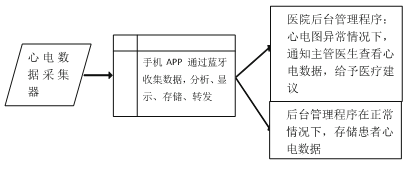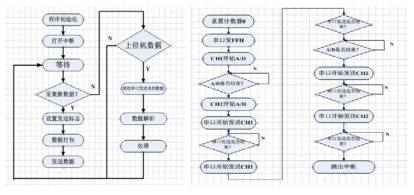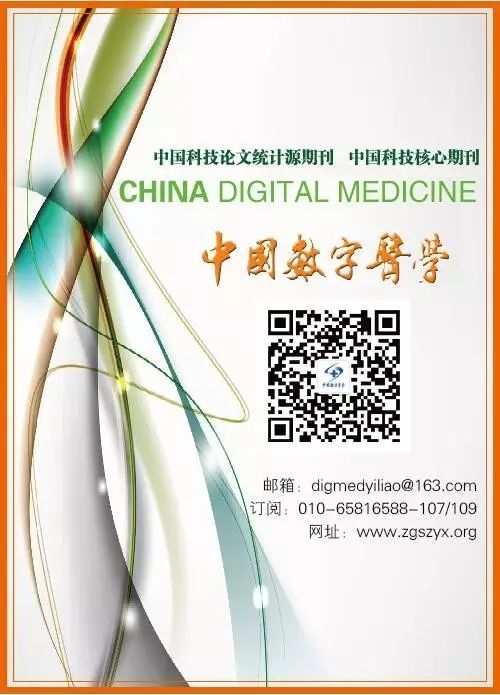The Internet Plus wearable ECG monitoring device utilizes small and lightweight sensors to enhance wearing comfort, allowing for long-term, real-time collection of human ECG data. By connecting with hospital databases through wireless transmission modules, it integrates individuals into the medical big data ecosystem, breaking the spatial limitations between medical devices and people. In a populous and increasingly aging country like China, wearable medical monitoring devices can effectively reduce hospitalization observation time, projecting high-quality medical resources onto elderly individuals at home through Internet Plus, solving the inconvenience of regular follow-ups for patients.
The “Internet Plus wearable medical devices” also aids in hierarchical diagnosis and treatment, and community healthcare, providing high-quality data sources for health big data and personal health records. It automates the completion of personal health records, chronic disease management, and patient monitoring during recovery, allowing patients to receive medical health services beyond the constraints of time and space, reducing medical costs and burdens, thus enabling truly personalized services for patients. The development of wearable medical devices will be a hotspot in medical device research and development in the next 5-10 years.
1 Overall Design of Internet Plus Wearable ECG Monitor
The overall structure of the Internet Plus wearable ECG monitoring device can be summarized into three main components: ECG data collector, mobile app, and hospital backend management program, as shown in Figure 1.

Figure 1 Overall Design Framework
The project experimental process is as follows: The lead ECG collection probe transmits ECG signals to the analog data interface of the Arduino microcontroller, setting the collection frequency and buffer, converting the analog signal into a digital signal.
The buffered digital signal is cached in text form, and data is transmitted wirelessly through a Bluetooth module or WiFi module.
Experiments showed that the Bluetooth module has a short transmission distance but low power consumption and small size, allowing real-time ECG status to be viewed through a mobile phone, sending ECG data to the hospital server using the mobile data transmission network. The WiFi module has high power consumption and large size, requiring patients to stay in a WiFi environment, but it can directly connect to the Internet to transmit ECG data to the hospital.
Considering the pros and cons, this project ultimately decided to use the Bluetooth module for data transmission.
2 Device Implementation
2.1 Physiological Data Collection and Processing Materials used: medical silver-plated electrode sheets, conductive liquid, medical ECG sensors, batteries, Arduino microcontroller. The electronic prototype platform has the following advantages: hardware is expandable, Arduino is based on Creative Commons license, allowing developers to expand and improve circuits according to their needs; the programming language is simple, similar to C language, making it easy for medical workers to expand and modify the platform; all electronic components are cost-effective, with performance validated over more than 10 years, good stability, and low energy consumption. The total cost of all electronic components purchased for this project is less than 150 yuan, and the price for mass production will be around 100 yuan.
The ECG sensor is connected to the analog signal interface (Analog I/O) 0-5 of the Arduino microcontroller. Then, by programming, the analog signal is collected, converted into a digital signal, and cached (written into a txt file), finally forwarding the digital signal (txt file) through the wireless module. The interval is set to once every 1 to 5 minutes.
2.2 Wireless Communication Module Communication Method One: Using a Bluetooth module. Bluetooth is a wireless communication technology that supports communication within 10 meters, simplifying the communication steps between terminal devices and between terminal devices and the Internet; the widespread use of Bluetooth is mainly due to the global availability of Bluetooth wireless technology specifications, the wide range of devices using it, and the simplicity of operational steps. Data transmission distance is short, requiring the user to install software on their mobile phone to automatically relay ECG data.
Communication Method Two: Using a WiFi module (not used in this project). WiFi has high power consumption and directly transmits data to the hospital server in areas covered by WiFi in hospitals and homes. This method has a higher failure rate, and data connection is complicated to configure. However, the ESP8266 is highly integrated, including antenna switches and power management converters. Therefore, it requires very few external circuits, and the entire solution, including the front-end module, minimizes the PCB space during design. If this device is used in a hospital, WiFi data transmission can be considered.
2.3 Program Design The software part mainly includes: main program, timer interrupt program, and real-time ECG calculation program. The main program mainly performs loop execution to detect real-time ECG fluctuations and checks whether the timer has been interrupted; the timer interrupt program is responsible for reading the collected data after a specified time and storing it in the cache (Micro-SD); the real-time ECG calculation program normalizes the effective data read.
After completing the initializations, the main program checks the timer interrupt status. After a timer interrupt, the main program calls the ECG calculation function to perform ECG calculations and collect the calculated real-time ECG data for judgment. If the real-time ECG value exceeds the normal range, an alarm is triggered. The specific process is shown in Figure 2.

Figure 2 Program Workflow
3 Outlook
The “Internet Plus wearable ECG monitoring device” is a miniaturized sensor integration platform that can simultaneously collect multiple physiological data, with significant advantages in production costs compared to existing devices. It can be made as thin and light as a band-aid, providing good wearing comfort, and is easy to use, suitable for elderly people, children, and other demographics. With the development of medical sensors, the accuracy of sensors for heart rate, ECG, blood glucose, and EEG is improving, and miniaturization will ignite the production and use of wearable medical devices, addressing the imbalance in medical resource distribution. Supervising doctors and nurses can dynamically and in real-time monitor patients’ health data through office computers or mobile clients, providing health guidance to patients; for patients with chronic diseases and elderly illnesses, “Internet Plus wearable medical devices” can reduce ordinary hospitalization observation, alleviating burdens for families. Users can remotely transmit the physiological data collected through wearable medical devices to the hospital’s electronic medical record system, assisting communities in managing elderly home care. In case of a health crisis, ambulances can be dispatched immediately for emergency rescue. The technological application of “Internet Plus wearable medical devices” has broad prospects, benefiting a large population, and will rapidly develop in the next 10-20 years, fundamentally changing the existing medical ecological environment.
(Source: “Chinese Journal of Digital Medicine” 2017, Issue 2, Authors: Ji Jinhua, Zhang Tao, Zhang Tingxu, Zhou Mingzhang, Institution: Xinjiang Medical University School of Medical Engineering; Author: Xia Wenwen, Institution: Xinjiang Medical University Clinical College)
“Chinese Journal of Digital Medicine” WeChat store, click belowRead Originalto enter
